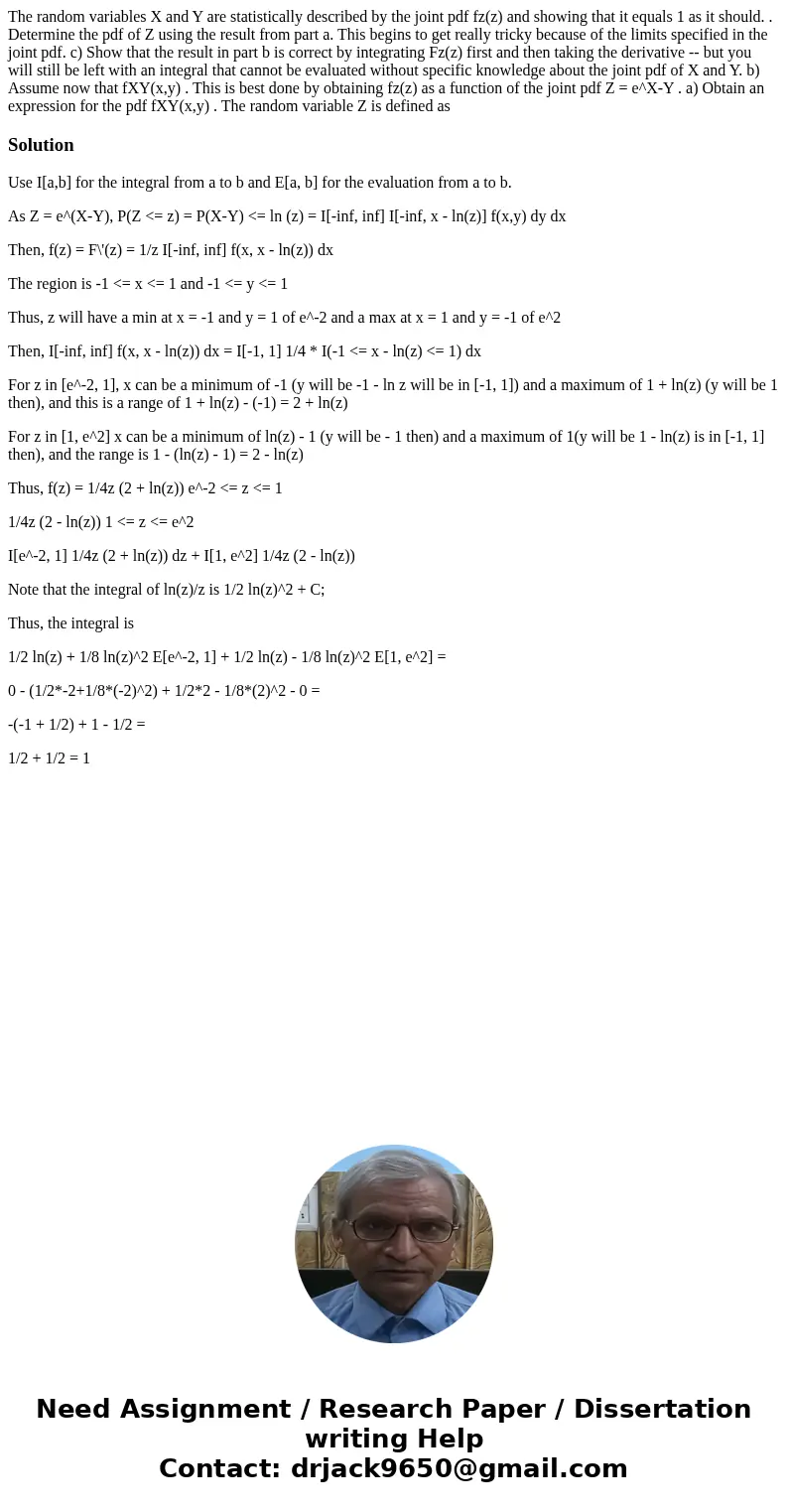The random variables X and Y are statistically described by
Solution
Use I[a,b] for the integral from a to b and E[a, b] for the evaluation from a to b.
As Z = e^(X-Y), P(Z <= z) = P(X-Y) <= ln (z) = I[-inf, inf] I[-inf, x - ln(z)] f(x,y) dy dx
Then, f(z) = F\'(z) = 1/z I[-inf, inf] f(x, x - ln(z)) dx
The region is -1 <= x <= 1 and -1 <= y <= 1
Thus, z will have a min at x = -1 and y = 1 of e^-2 and a max at x = 1 and y = -1 of e^2
Then, I[-inf, inf] f(x, x - ln(z)) dx = I[-1, 1] 1/4 * I(-1 <= x - ln(z) <= 1) dx
For z in [e^-2, 1], x can be a minimum of -1 (y will be -1 - ln z will be in [-1, 1]) and a maximum of 1 + ln(z) (y will be 1 then), and this is a range of 1 + ln(z) - (-1) = 2 + ln(z)
For z in [1, e^2] x can be a minimum of ln(z) - 1 (y will be - 1 then) and a maximum of 1(y will be 1 - ln(z) is in [-1, 1] then), and the range is 1 - (ln(z) - 1) = 2 - ln(z)
Thus, f(z) = 1/4z (2 + ln(z)) e^-2 <= z <= 1
1/4z (2 - ln(z)) 1 <= z <= e^2
I[e^-2, 1] 1/4z (2 + ln(z)) dz + I[1, e^2] 1/4z (2 - ln(z))
Note that the integral of ln(z)/z is 1/2 ln(z)^2 + C;
Thus, the integral is
1/2 ln(z) + 1/8 ln(z)^2 E[e^-2, 1] + 1/2 ln(z) - 1/8 ln(z)^2 E[1, e^2] =
0 - (1/2*-2+1/8*(-2)^2) + 1/2*2 - 1/8*(2)^2 - 0 =
-(-1 + 1/2) + 1 - 1/2 =
1/2 + 1/2 = 1

 Homework Sourse
Homework Sourse